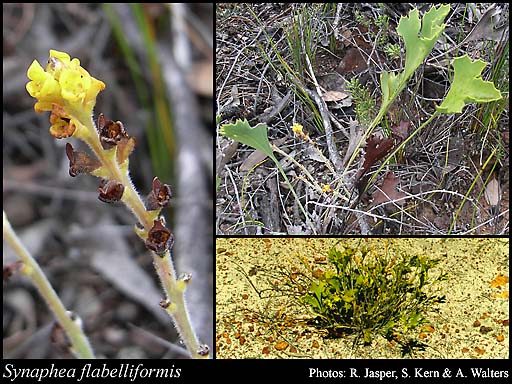- Reference
- Fl.Australia 16:490 (1995)
- Conservation Code
- Not threatened
- Naturalised Status
- Native to Western Australia
- Name Status
- Current
Tufted shrub, 0.15-0.4 m high. Fl. yellow, Jul to Oct. Sandy clay, white or grey sand over laterite, gravel.

Scientific Description
Shrubs; branchlets hairy. Leaves alternate, 80-215 mm long, hairy; petiole hairy; lamina flat, once divided or twice or more divided, tripartitely divided or divided only at the apex, shallowly divided, indumentum spreading; distance from base of leaf to lowest lobe 60-80 mm; terminal leaf lobe 0 mm long, 0 mm wide; lowest lobes 10-15 mm long. Inflorescences yellow; scape 100-250 mm long; floral bracts 2-4 mm long. Perianth 4.5-6 mm long, glabrous or hairy; adaxial tepal 4.5-6 mm long; abaxial tepal 3.5-5.5 mm long; ovary hairy, style glabrous; style including stigmatic disc 3-4 mm long, entire; stigma 0.6-1 mm long, 1-1.3 mm wide. Follicles 4-4.7 mm long. Flowers in July, August, September or October. Occurs in the South-west (SW) Botanical Province(s), in the Avon Wheatbelt (AW) or Jarrah Forest (JF) IBRA subregion(s).
Distribution
- IBRA Regions
- Avon Wheatbelt, Esperance Plains, Jarrah Forest.
- IBRA Subregions
- Fitzgerald, Katanning, Merredin, Northern Jarrah Forest, Southern Jarrah Forest.
- Local Government Areas (LGAs)
- Beverley, Brookton, Cuballing, Goomalling, Narrogin, Pingelly, Quairading, Ravensthorpe, Toodyay, Wagin, West Arthur, Wickepin, Williams, Woodanilling.